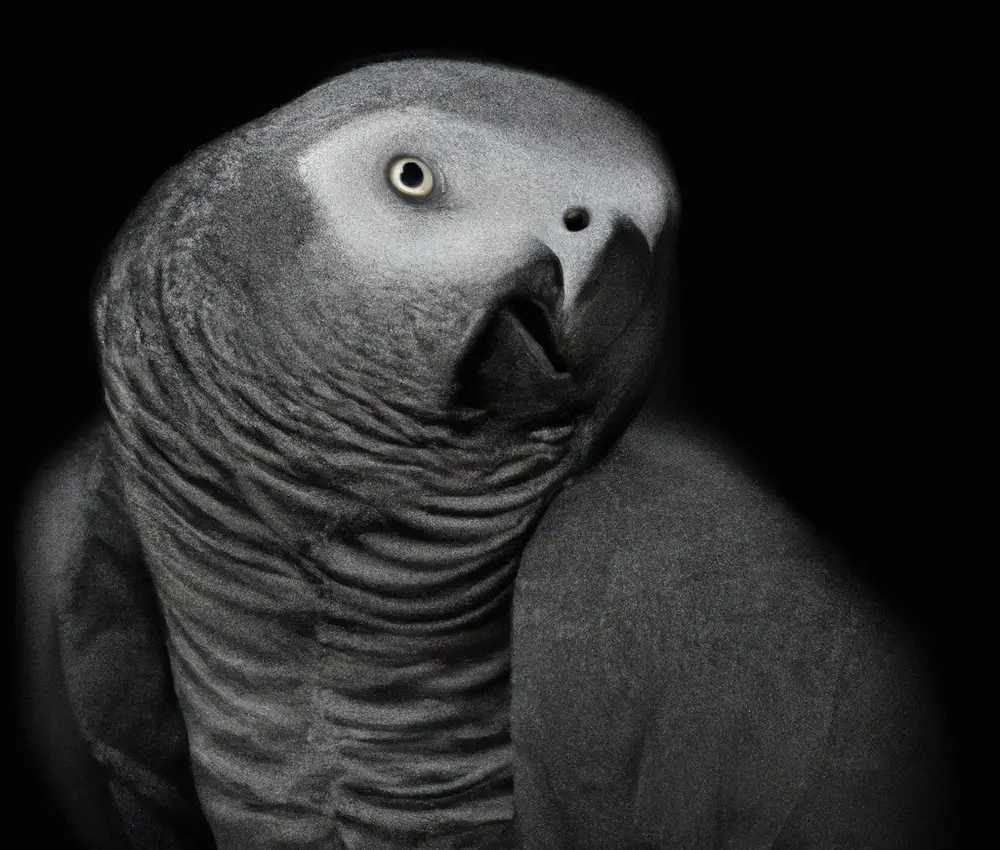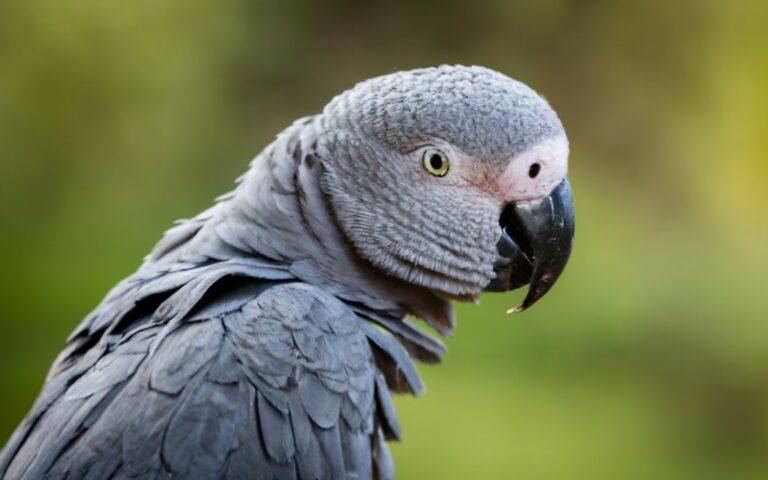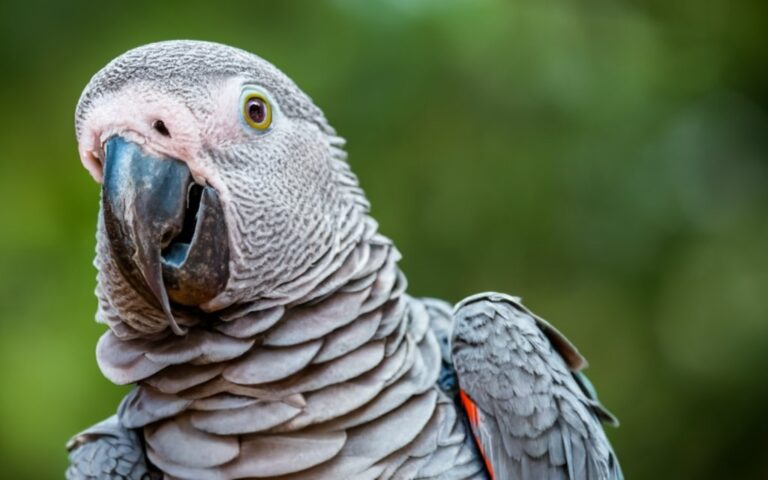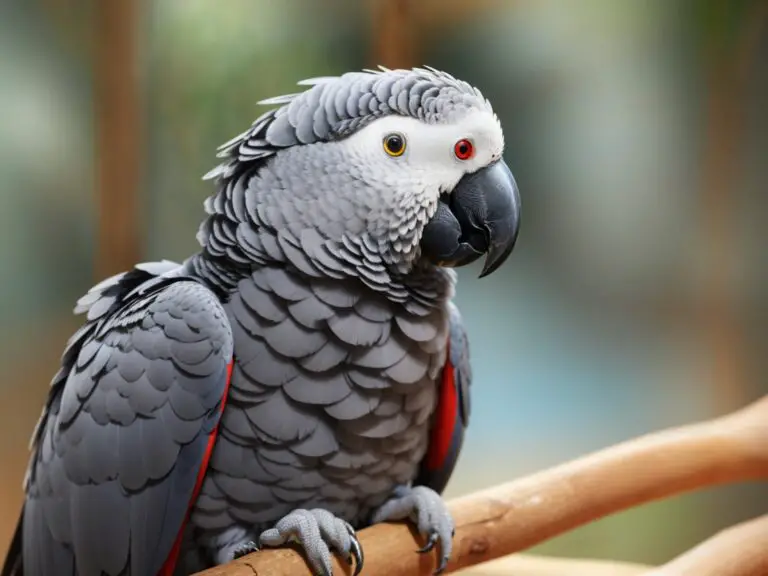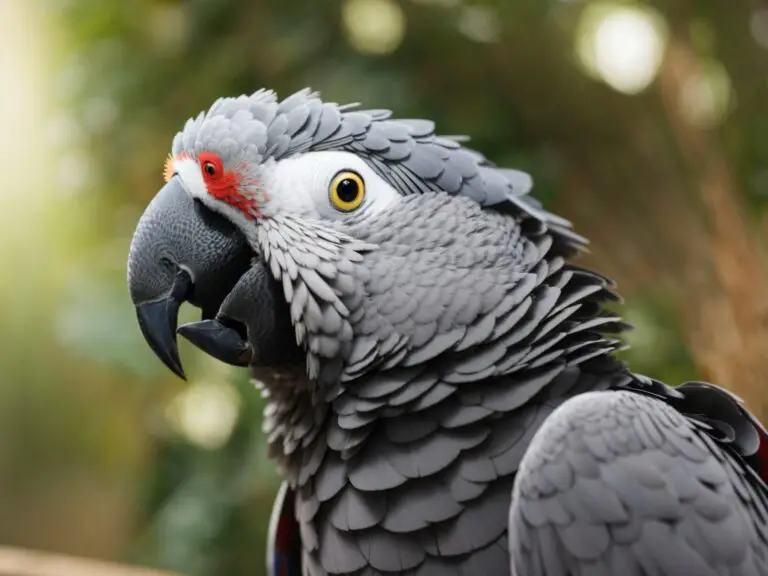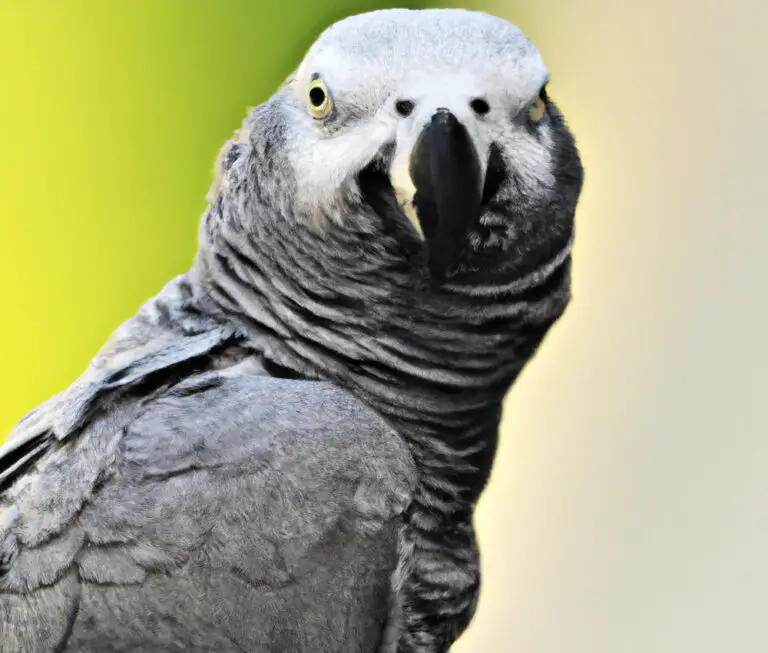How Do African Grey Parrots Adapt To Captivity?
Key Takeaways:
- African Grey Parrots can adapt to captivity through social interactions and mental stimulation.
- Providing a variety of toys and puzzles can help African Grey Parrots cope with captivity and prevent boredom.
- Proper nutrition and a structured daily routine are essential for the well-being of African Grey Parrots in captivity.
- Establishing trust and building a strong bond with their owners can positively impact the adaptation of African Grey Parrots to captivity.
Imagine being taken from your natural habitat and placed in an unfamiliar environment.
It can be a challenging experience, to say the least.
But what if I told you that African Grey Parrots have an amazing ability to adapt to captivity?
These incredible creatures undergo physical, psychological, and behavioral transformations that allow them to thrive in their new homes.
From changes in feather condition to bonding with humans as social companions, African Grey Parrots have unique adaptations that help them navigate the challenges of captivity.
In this article, we will explore the remarkable ways in which African Grey Parrots adjust to life in captivity and how we can provide them with the best possible experience.
Get ready to be amazed by the resilience and adaptability of these intelligent birds!
| Adaptation | Description |
| Intelligence | African Grey Parrots are highly intelligent and have the ability to learn a wide range of words and phrases. This helps them adapt to captivity by engaging in verbal communication with their owners. |
| Behavior | These parrots adapt their behavior to captivity by developing various activities such as playing with toys, solving puzzles, and engaging in interactive games with their owners. |
| Diet | In captivity, African Grey Parrots need a well-balanced diet consisting of fruits, vegetables, nuts, and high-quality pellets. This differs from their natural diet in the wild, but they can adapt to the provided food. |
| Socialization | These parrots are highly social creatures and require regular interaction with their owners to adapt to captivity. Socialization helps them feel secure and reduces stress and anxiety. |
| Environmental Enrichment | Providing a stimulating and enriching environment with toys, perches, and safe chew items helps African Grey Parrots adapt to captivity. This promotes mental and physical well-being and prevents boredom. |
| Training | Regular training sessions help African Grey Parrots develop trust, learn new behaviors, and adapt to the captive environment. Positive reinforcement techniques are used to encourage desired behaviors. |
Physical Adaptations of African Grey Parrots in Captivity
African Grey Parrots undergo physical adaptations in captivity.
Hint: Changes in feather condition and coloration, diet and feeding habits, and physical health and fitness.
Changes in Feather Condition and Coloration
In captivity, African Grey Parrots may experience changes in their feather condition and coloration. This can be influenced by various factors such as diet, environmental conditions, and stress levels.
Feathers may become duller or lose their vibrant colors.
Feather plucking and abnormalities can also occur due to boredom or anxiety. Providing a balanced diet, a stimulating environment, and minimizing stress can help maintain healthy feather condition.
Regular vet check-ups and proper grooming are also important for their overall well-being.
Physical Health and Fitness
Physical health and fitness are crucial for African Grey Parrots in captivity. They need regular exercise to stay fit, such as flying opportunities or supervised time outside the cage.
A balanced and nutritious diet is also essential, including a variety of fruits, vegetables, grains, and high-quality pellet food.
Regular veterinary check-ups ensure their overall health.
Psychological Adaptations of African Grey Parrots in Captivity
African Grey Parrots adapt psychologically in captivity through bonding with humans, acclimating to living spaces, and coping with stimulating environments.
Bonding with Humans as Social Companions
Bonding with humans is a vital aspect of the social adaptation of African Grey Parrots in captivity.
They can form strong emotional attachments to their human companions, considering them as part of their flock.
Regular interaction, positive reinforcement, and trust-building exercises can help foster a deep bond.
Providing quality time, affection, and a sense of companionship are key to a strong human-parrot relationship.
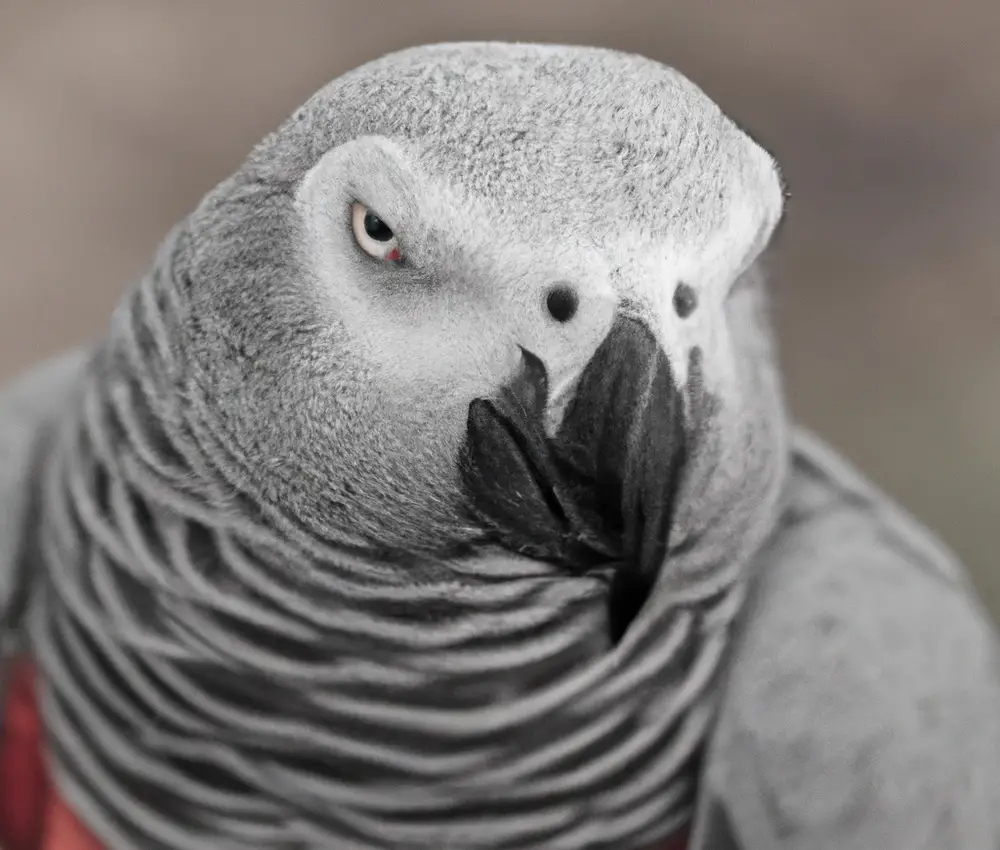
Acclimating to Living Spaces and Cages
African Grey Parrots can adapt to living spaces and cages with time and proper care. It is important to provide them with a spacious and stimulating environment, including perches, toys, and hiding spots.
Creating a routine, offering treats, and giving positive reinforcement can help them feel comfortable and secure.
Regular social interaction and mental stimulation are vital for their well-being.
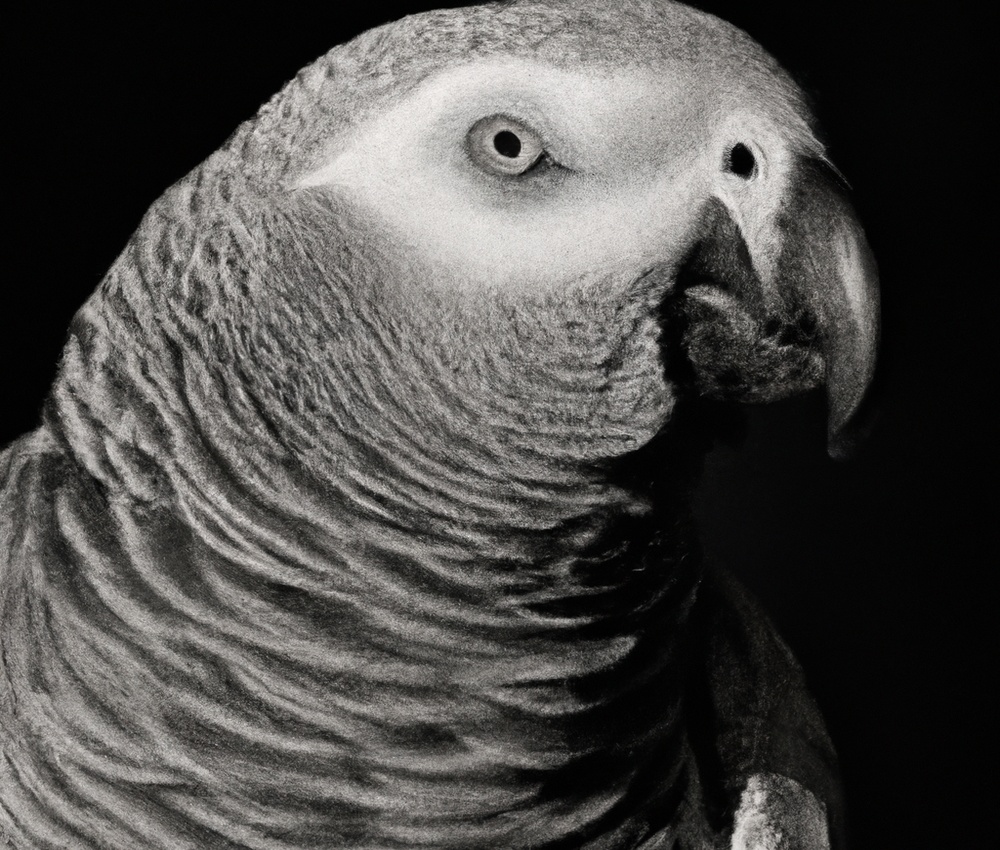
Coping with Stimuli and Environmental Enrichment
Coping with stimuli and environmental enrichment is essential for African Grey Parrots in captivity.
Parrots are intelligent and curious birds, so providing them with a variety of toys, puzzles, and foraging opportunities can help keep their minds active and engaged.
It is also important to expose them to different sounds, sights, and textures to prevent boredom and encourage natural behaviors.
Rotating toys and rearranging their living space regularly can provide new and challenging stimuli.
Additionally, spending quality time interacting with them can help them feel more secure and content in their environment.
Behavioral Adaptations of African Grey Parrots in Captivity
African Grey Parrots adapt their behavior in captivity through vocalization and communication, problem-solving skills, and displaying learned behaviors and tricks.
Vocalization and Communication in Captivity
In captivity, African Grey Parrots continue to vocalize and communicate, albeit in different ways than in the wild. They may mimic human speech, mimic other animal sounds, or create unique vocalizations.
They also use body language, such as head movements and feather displays, to communicate.
Providing social interaction and mental stimulation is important for their well-being and to encourage their vocalization and communication skills.
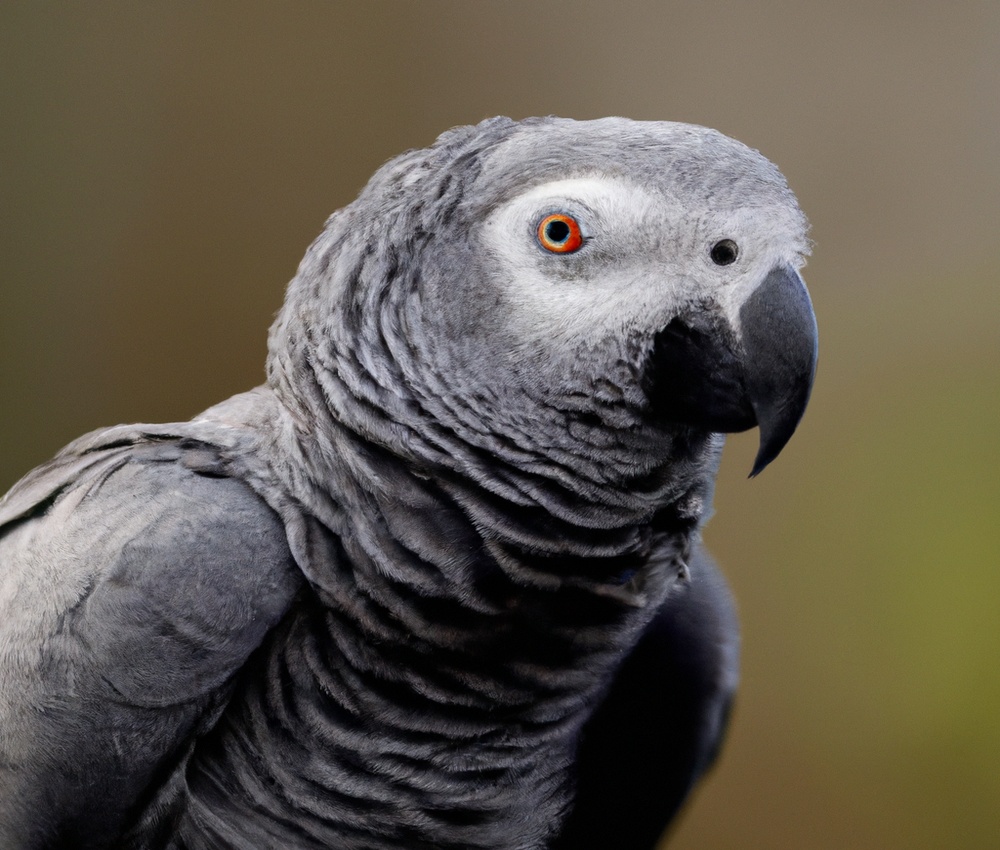
Development of Problem-Solving Skills
African Grey Parrots in captivity have demonstrated impressive problem-solving skills. They can learn to solve puzzles, open locks, and manipulate objects to obtain rewards.
This is facilitated by their high cognitive abilities and curiosity.
Providing them with challenging toys and activities can further enhance their problem-solving skills.
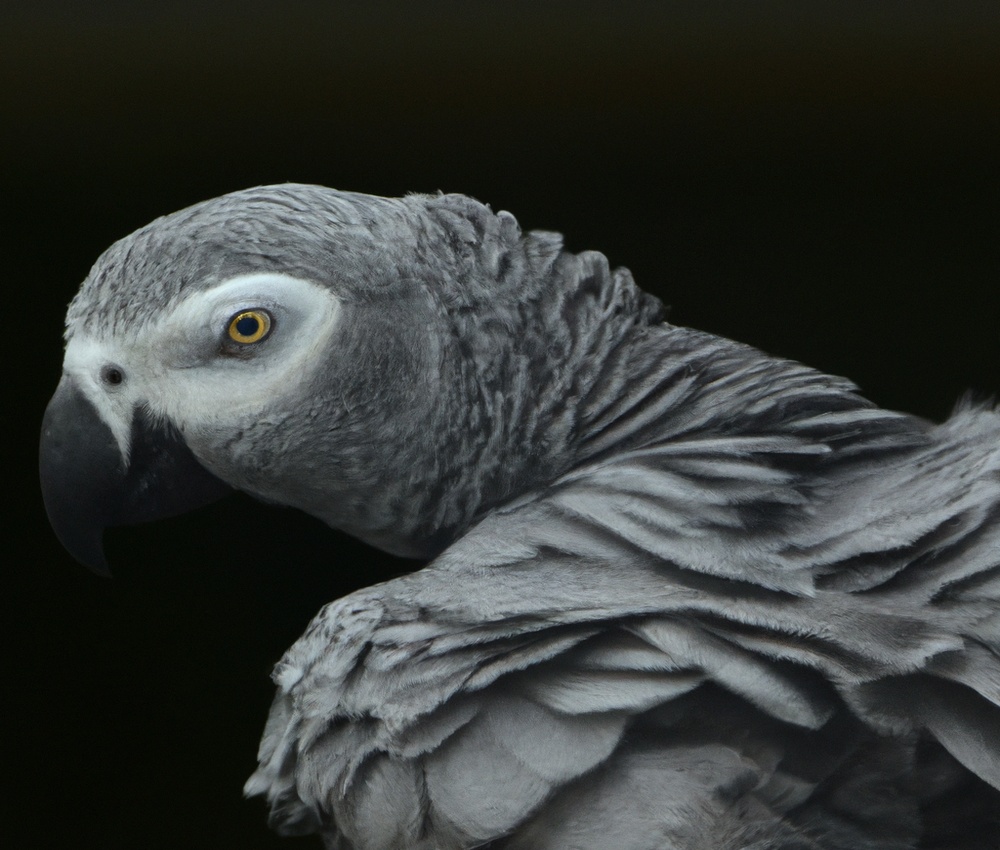
Displaying Learned Behaviors and Tricks
African Grey Parrots are known for their intelligence, and they can display a wide range of learned behaviors and tricks in captivity.
They can be trained to mimic human speech, perform simple tasks like retrieving objects, and even solve puzzles.
These parrots thrive on mental stimulation, so teaching them new tricks can be both entertaining for them and rewarding for their caretaker.
It’s important to use positive reinforcement and rewards during training to encourage their engagement and success.
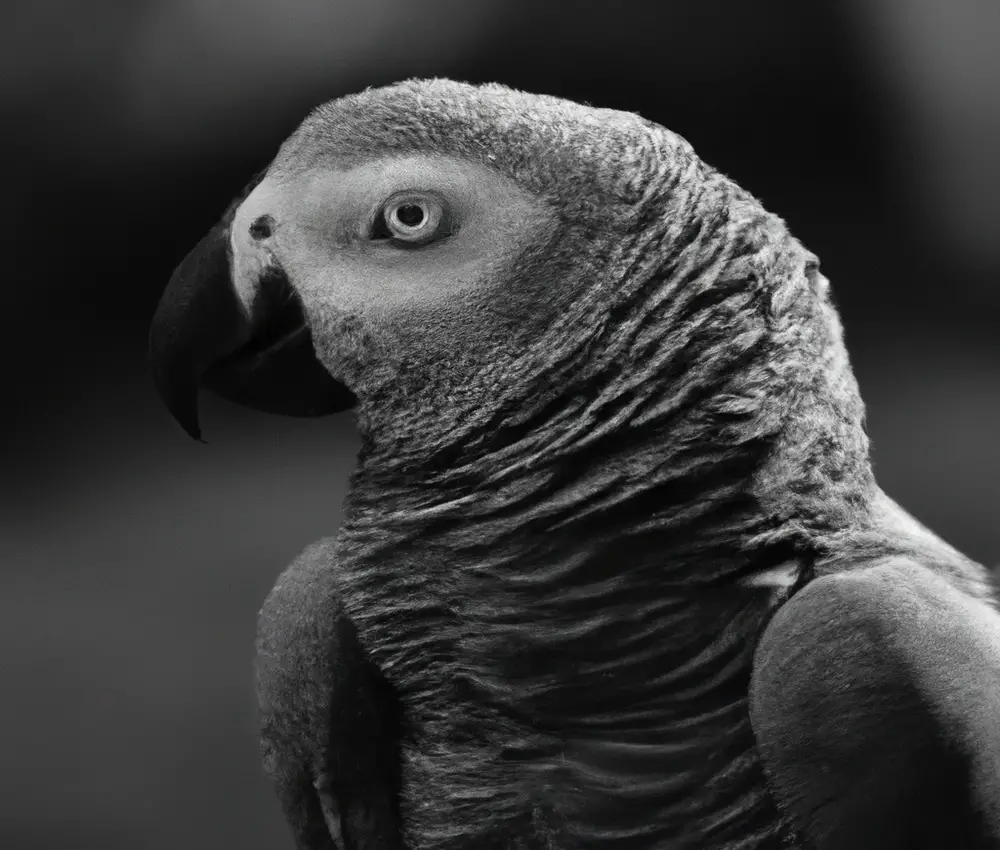
Challenges and Potential Issues for African Grey Parrots in Captivity
African Grey Parrots face challenges and potential issues in captivity that affect their natural behaviors, social interaction, and mental stimulation.
Effects of Captivity on Their Natural Behaviors
Living in captivity can have significant effects on the natural behaviors of African Grey Parrots. They may experience a decrease in their ability to engage in instinctual activities, such as foraging, flying, and socializing with other parrots.
Additionally, the limited space and lack of stimulation in captivity can lead to boredom and frustration, which may result in the development of abnormal behaviors such as feather plucking and self-destructive behaviors.
It’s important for caretakers to provide a stimulating and enriching environment to help mitigate these effects and promote their natural behaviors.
Loneliness and Lack of Social Interaction
Loneliness and lack of social interaction can have a negative impact on African Grey Parrots in captivity. These highly intelligent birds are naturally social creatures and thrive on social bonds.
Without companionship and interaction, they can become bored, stressed, and even depressed.
It is crucial to provide them with regular human interaction, as well as opportunities for socializing with other parrots if possible. Creating a stimulating and enriching environment can also help alleviate their loneliness and provide mental stimulation.
Mental Stimulation and Boredom
Mental stimulation is crucial for the well-being of African Grey Parrots in captivity. Boredom can lead to behavioral issues.
To combat this, provide interactive toys, puzzles, and foraging opportunities.
Regular training sessions, social interaction with humans, and environmental enrichment also help to keep them mentally stimulated and engaged.
Providing an Optimal Captivity Experience for African Grey Parrots
To provide an optimal captivity experience for African Grey Parrots, focus on creating a spacious and stimulating environment, offering a quality diet and nutrition, and ensuring regular physical and mental exercise.
Creating a Spacious and Stimulating Environment
Creating a spacious and stimulating environment is essential for the well-being of African Grey Parrots in captivity.
Provide a large cage that allows for ample movement and flight.
Offer various perches and platforms to simulate their natural habitat.
Include toys, puzzles, and foraging opportunities to keep them mentally and physically engaged.
Regularly rotate toys and provide new ones to prevent boredom.
Additionally, provide a designated area outside the cage for supervised play and exploration.
Offering Quality Diet and Nutrition
Offering quality diet and nutrition is essential for the well-being of African Grey Parrots in captivity.
A balanced diet should include a variety of fresh fruits, vegetables, seeds, and pellets.
Offering a mix of these food items ensures that the birds receive all the necessary vitamins, minerals, and nutrients.
It is important to monitor their food intake and adjust their diet accordingly.
Additionally, providing clean, fresh water every day is crucial for their hydration.
Remember, a healthy diet promotes the overall health and longevity of African Grey Parrots.
Ensuring Regular Physical and Mental Exercise
Regular physical and mental exercise is essential for the well-being of African Grey Parrots in captivity. Providing ample opportunities for flight, climbing, and play can help them maintain their physical fitness.
Engaging them in interactive toys and puzzles can stimulate their minds and prevent boredom.
Additionally, offering socialization with humans and other parrots can contribute to their mental stimulation and overall happiness.
Frequently Asked Questions about African Grey Parrots in Captivity
Can African Grey Parrots be Happy in Captivity?
African Grey Parrots can be happy in captivity if their physical, psychological, and behavioral needs are met. They adapt well to living with humans and can bond with them as social companions.
Providing a spacious and stimulating environment, offering a quality diet, ensuring regular exercise, and addressing potential challenges such as loneliness and mental stimulation can help create a happy captivity experience for them.
How Long Do African Grey Parrots Live in Captivity?
African Grey Parrots have a long lifespan in captivity, typically living between 40 to 60 years.
With proper care, diet, and environment, they can even live longer.
Their longevity makes them lifelong companions, so it’s important to be prepared for their commitment when considering owning one.
Can African Grey Parrots Adapt to Living with Other Pets?
African Grey Parrots can adapt to living with other pets, but it depends on the individual parrot and the other animals involved. With proper introductions, supervision, and a safe environment, they can form positive relationships with other pets like dogs and cats.
However, caution is necessary as African Greys have delicate personalities and may not tolerate aggressive or overly playful behavior from other animals.
It’s important to monitor their interactions and provide them with separate spaces if needed to ensure their safety and well-being.
Final Verdict
The adaptability of African Grey Parrots to captivity is remarkable, as they undergo physical, psychological, and behavioral changes when living in captivity. Feather condition and coloration may change, and they adjust to new diets and feeding habits.
They bond with humans, acclimate to living spaces, and cope with stimuli.
However, challenges such as the effects on natural behaviors, loneliness, and boredom do arise. To provide an optimal captivity experience, a spacious and stimulating environment, quality diet and nutrition, and regular physical and mental exercise should be provided.
Overall, African Grey Parrots have the capacity to thrive in captivity when their needs are met.

